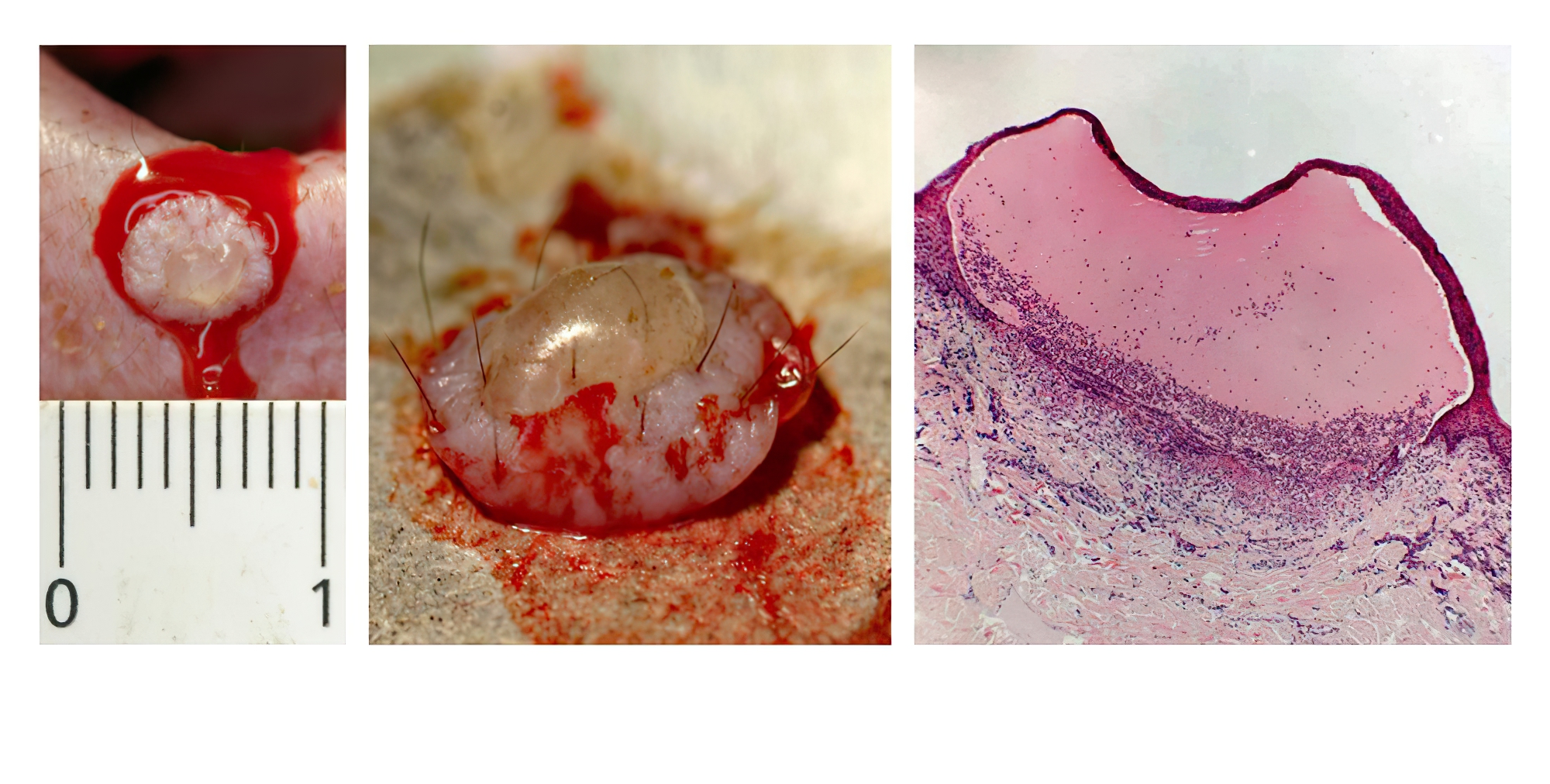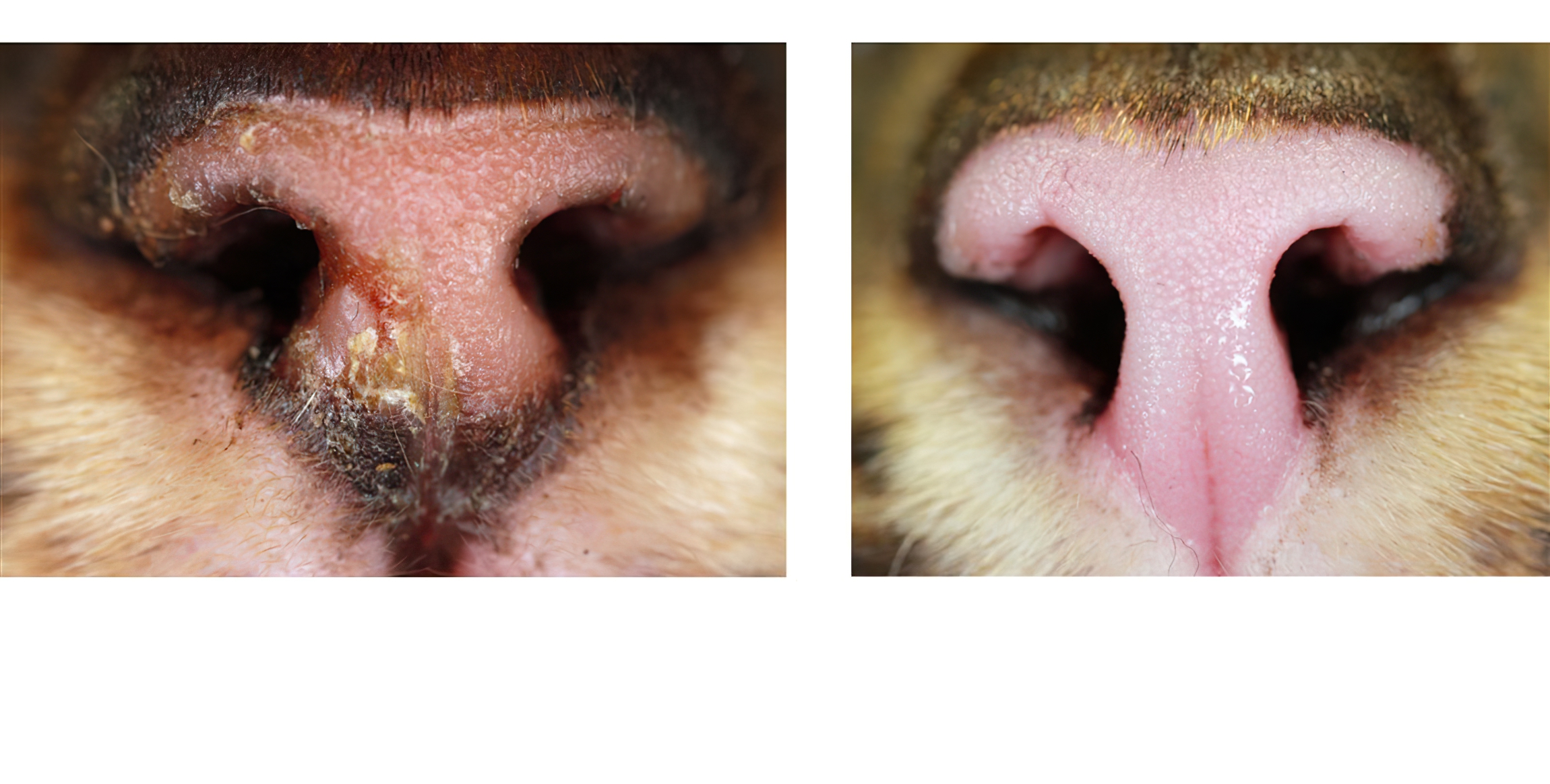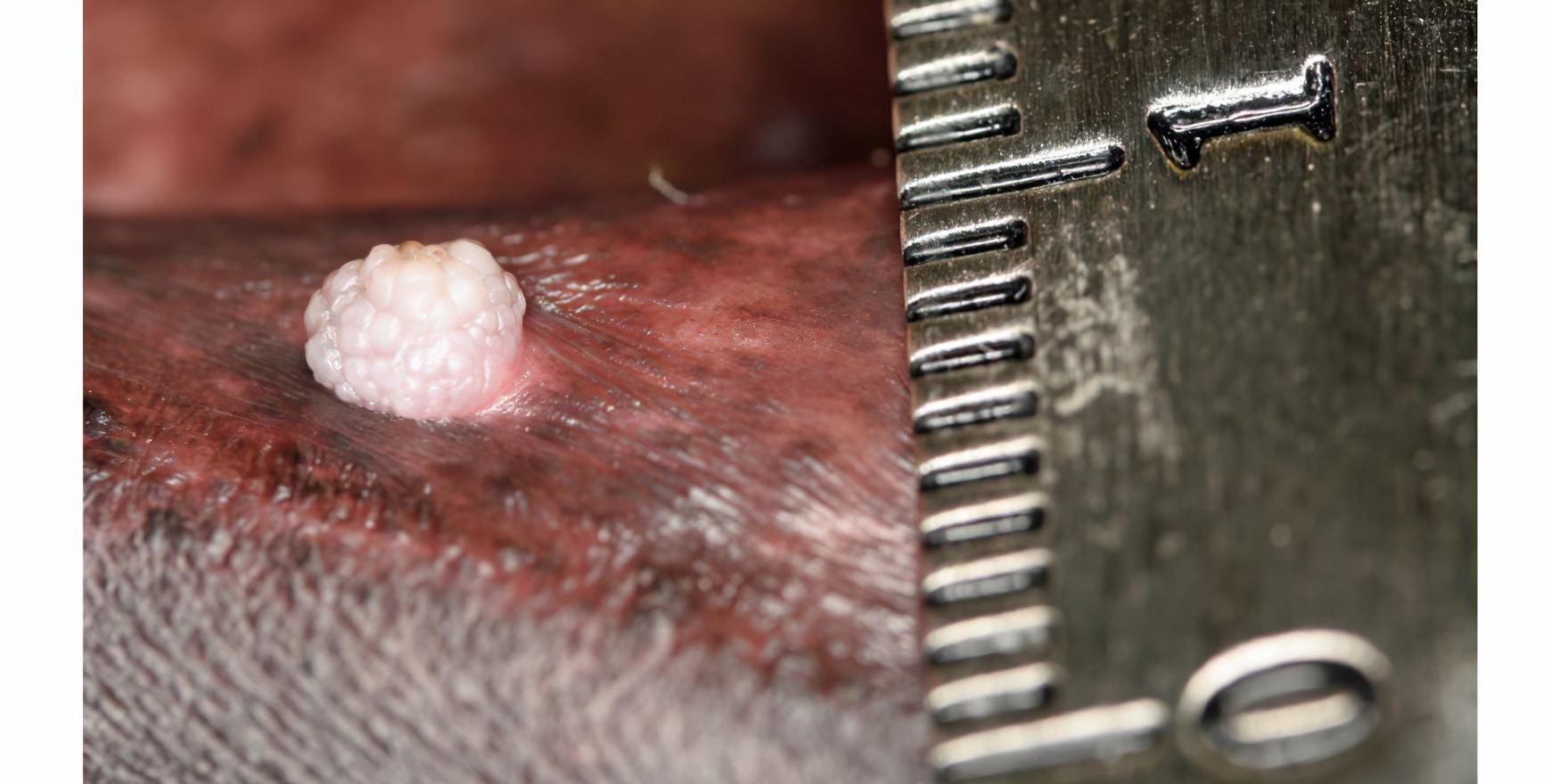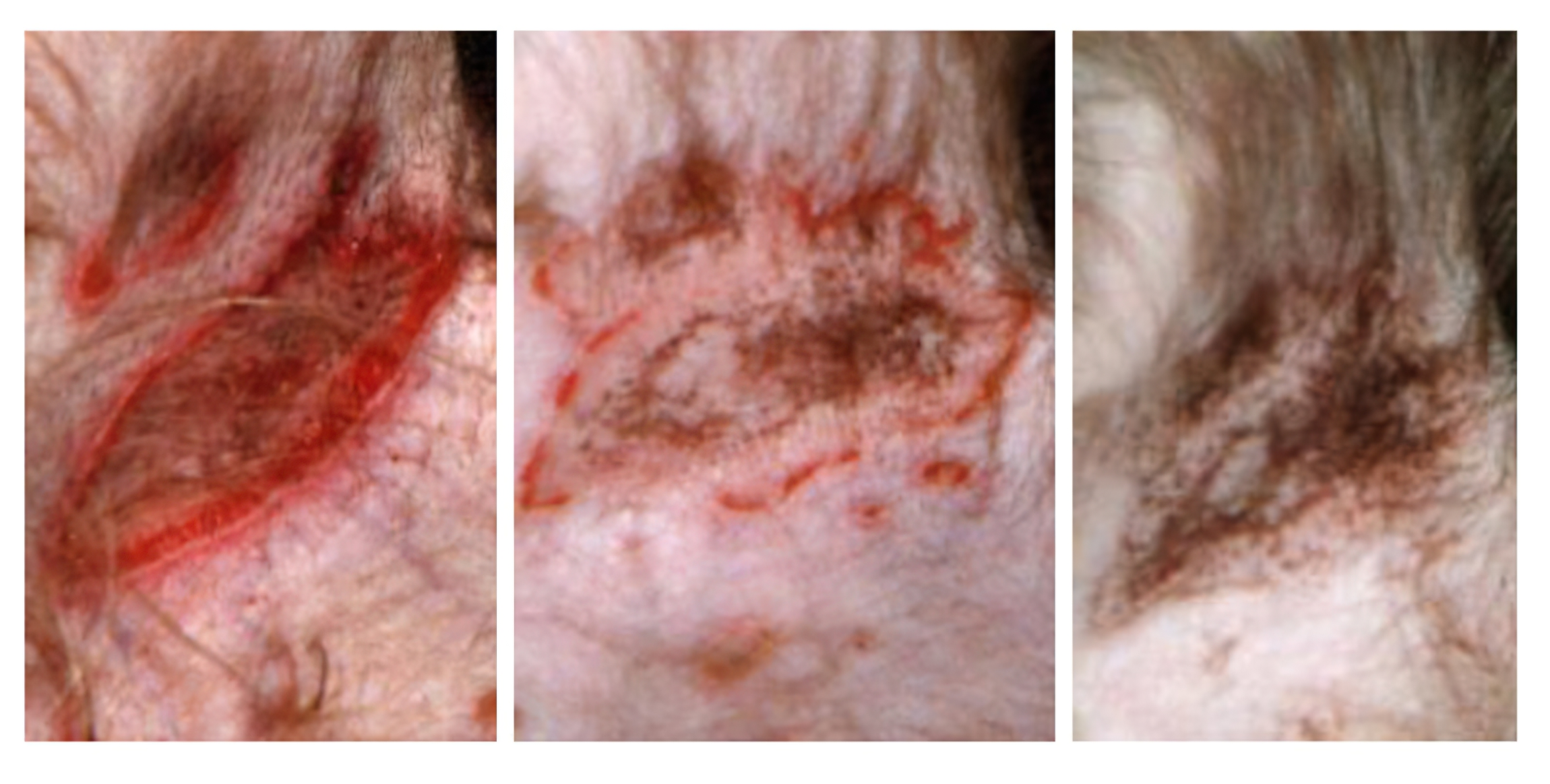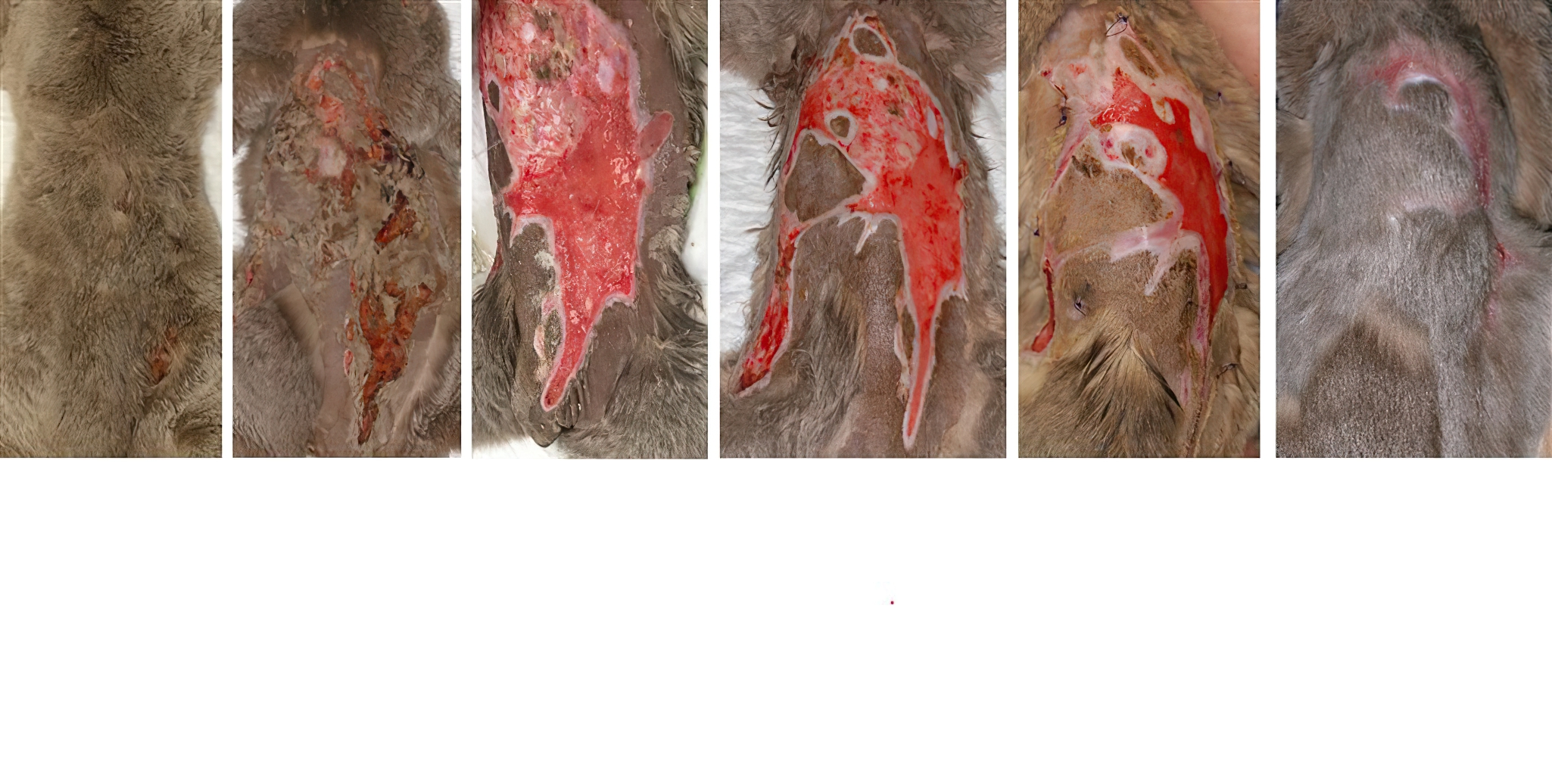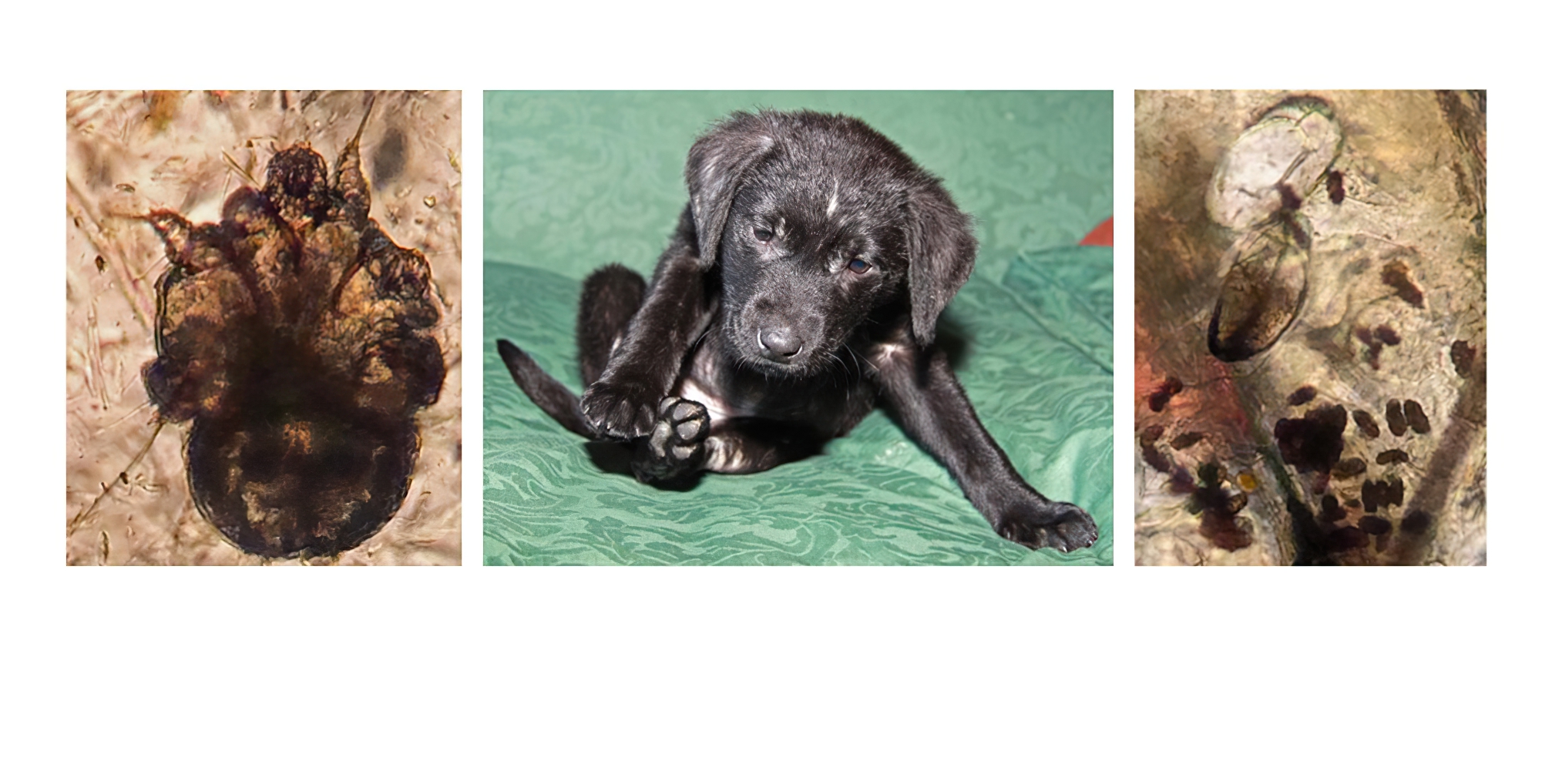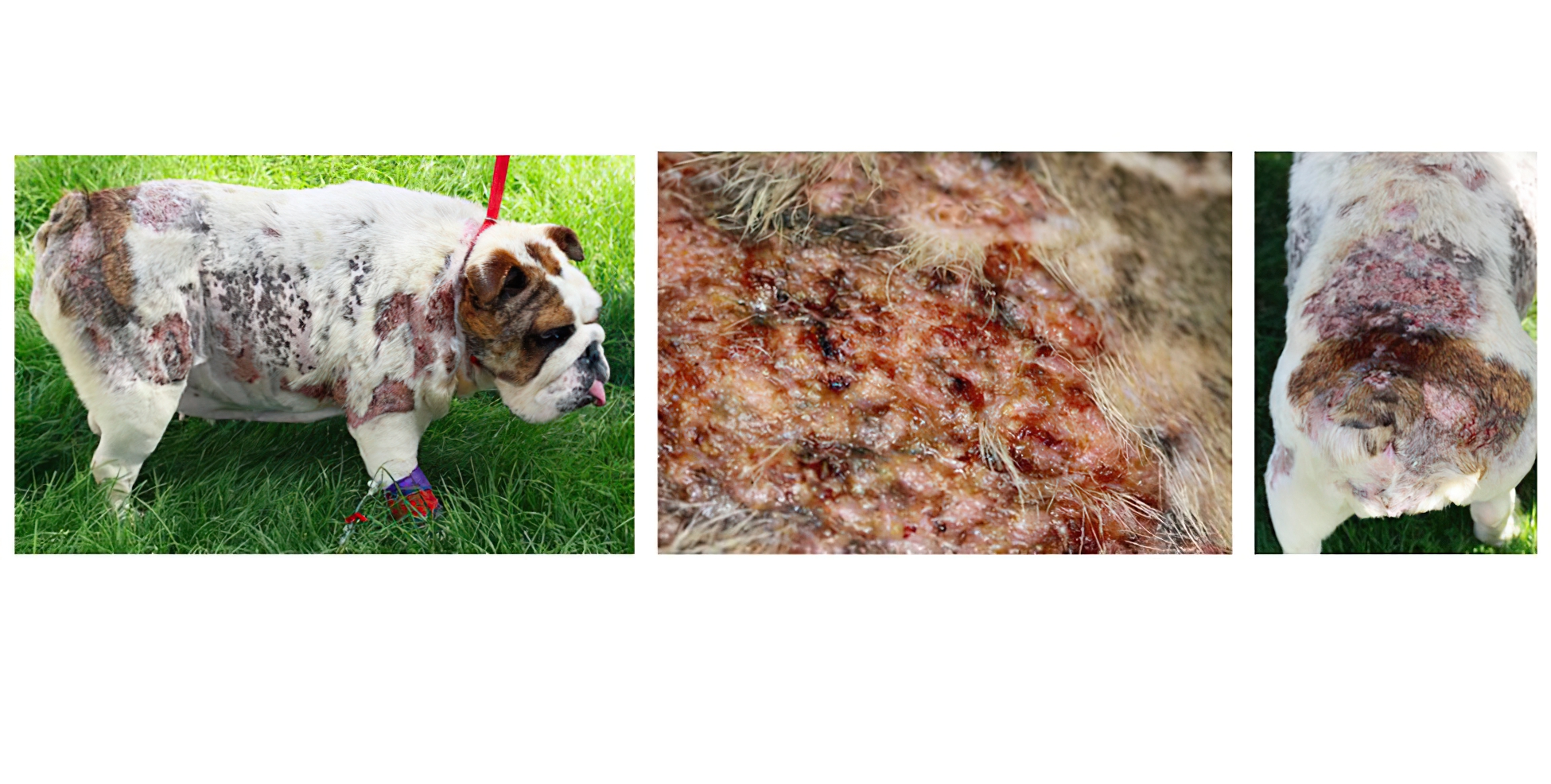If your pet has been scratching itself, has developed unexplained sores or bald areas or has been suffering from recurrent skin and/or ear infections, despite recent or repeated treatments from your veterinary surgeon, then I may be able to help. If drug side effects have occurred from previous treatments used in controlling the skin disease there are often alternative therapies available.
Cats and dogs will demonstrate that their skin is inflamed and irritated by:
- rubbing their faces
- shaking their heads
- scratching their head, ears, neck and flanks
licking, nibbling and chewing their armpits, groin and/or paws (brown stained paws in white coated dogs) - rubbing their backsides (often misdiagnosed as ‘worms’ or ‘anal gland disease’)
Itching is abnormal and never ‘a habit’. This behaviour may initially go unnoticed by the owners because it occurs at night or whilst the pet is alone in an empty house with no interesting distractions (‘hidden groomers’ or ‘closet lickers’).
Cats are so adept at concealing their itching that the skin signs can appear as if out of nowhere and often very quickly:
![]() many small scabs under the coat along the back or around the neck (papulocrustous dermatitis)
many small scabs under the coat along the back or around the neck (papulocrustous dermatitis)
![]() hair loss on the inside of the front legs, underside of the tummy, back of the hind legs (‘fur mowers’, non-inflammatory alopecia)
hair loss on the inside of the front legs, underside of the tummy, back of the hind legs (‘fur mowers’, non-inflammatory alopecia)
![]() swollen chins, ulcerated thickened lips, moist red inflamed areas on the tummy, in the groin or on the back of the thighs (eosinophilic granuloma complex)
swollen chins, ulcerated thickened lips, moist red inflamed areas on the tummy, in the groin or on the back of the thighs (eosinophilic granuloma complex)
The most common reason for seeking a dermatology referral is atopic dermatitis – an inflammatory and itchy allergic skin disease associated most commonly with antibodies directed against environmental substances (house dusts mites, pollens, moulds etc.). In dogs this condition often becomes apparent in the first two years of life. You may notice that your pet grooms excessively, with licking or chewing of the paws, tummy and backside. The ears may become reddened and feel hot to touch. The result of this itchiness is that the pet will often be presented to the veterinary surgeon several times in the first eighteen months of life for a variety of seemingly minor skin/ear conditions. Between these episodes the skin and the coat can look remarkably normal. The scratching, skin rashes, acute moist ‘hotspots’ and ear infections may all seem to occur independently. As the condition becomes more severe, itchiness begins to dominate and the pet will suffer recurrent yeast and/or bacterial infections.
There are many other types of skin diseases caused by:
![]() different types of infections
different types of infections
![]() many and varied parasites
many and varied parasites
![]() other types of allergies
other types of allergies
![]() glandular and other internal problems
glandular and other internal problems
![]() underactive or overactive immune systems
underactive or overactive immune systems
![]() hereditary or congenital conditions
hereditary or congenital conditions
![]() cancers
cancers
Some of these are specific to certain breeds and even families of pets. Foreign, imported diseases are now of increasing importance due to ease of international travel for pets.
It can be difficult to diagnose, treat, manage or cure these many diseases in busy general veterinary practice.
If you think I may be able to help your pet, in the first instance:
• Please contact your own veterinary surgeon as professional etiquette dictates that a formal referral is always undertaken
• Your vet will be able to contact me and provide me with your pet’s medical history.
• We can then arrange the first available consultation after I have collated and reviewed the medical information on the course of the skin problem to date.

